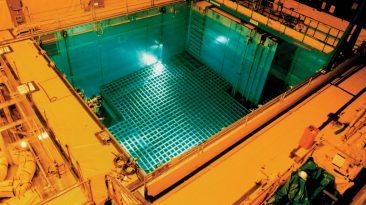What makes the perfect human? Immaculate features? Indomitable Intelligence? Incomparable wit? Or irresistible charm? What if you could modify your genes? What if everyone could? What are the consequences of being “better?”
Many bacteria are able to combat viral infection with a defense system called Crispr. Crispr records viral DNA that a bacteria’s been exposed to, and enables a protein complex called Cas9 to basically search for the viral DNA, and destroy it.
[dx_custom_adunit mobile_id=”RTK_v1lP”]Enter Dr. Jennifer Doudna, who started researching Crispr in 2005. By 2012, she co-founded Crispr-Cas9, a life-changing technology that enables humans to edit genes.
As more research on Crispr comes forward, so do new possibilities. Could we cure genetic diseases? Could we cut out cancer? Could I finally get the blue eyes I’ve always wanted? But, what happens when gene editing goes too far?
For genetically modified people to become the norm, gene-editing wouldn’t only have to be legal, it would have to be relatively affordable.
Some countries might even choose subsidize it for life-saving medical procedures. After all, technology like Crispr-Cas9 may be able to be used to prevent any genetic disease or disability we know of today. The genes responsible for Huntington’s disease and cystic fibrosis could be wiped out, and prevented from being passed on. Economics aside, every newborn could have an opportunity to live a normal, healthy life.
[dx_custom_adunit desktop_id=”RTK_CDE4″ mobile_id=”RTK_SUFd”]Imagine creating a super-race of people. If everybody on the planet was genetically engineered to be the strongest version of themselves, would we still have competitions like the Olympics? If we could modify the intelligence of everyone on Earth, could we solve all of humanity’s greatest challenges? Could it finally be your turn to be Miss Universe, or… The Hulk?
But is Crispr-Cas9 really a cure-all? Or a catch-22? When you use Crispr to edit-out unwanted genes, you destroy thousands of DNA bases in one go. Yes, Crispr is pretty precise, but there’s still a risk that you could silence some genes that are meant to be active, and activate genes that are meant to be dormant.
What researchers are finding is that in trying to save yourself through gene-editing, you might just cut out a key anti-cancer mechanism. Not only does Crispr pose a cancer risk, but in re-programming or re-arranging DNA, we might even end up creating new diseases.
Whether it’s a new procedure, a routine operation, or an over-the-counter cold pill, we tend to accept the risk of side-effects or complications if it means getting better. But with gene-editing, don’t you think that getting better might get a bit weird?
What happens when parents start to choose their kids’ height, eye color, hair color, skin pigment, and gender? What happens when those with financial means can buy better cures, better features, and ultimately better futures?
Well that future, if possible, is very far away. Crispr technology is still in its infancy. And our understanding of genes is still too limited to start choosing height or hair color at will.
Eye color, hair color, height, and other physical features are associated with a combination of genes, not just one. But forget science for a moment, ask yourself which is more important: Pure, cold perfection? Or true emotional human connection? It might not be perfect, but it certainly can’t be hacked.
Sources
- “What If Genetically Modified People Became The Norm?“. 2017. Pro Journo Davos 2017. Accessed November 6 2018.
- Sample, Ian. 2015. “Scientists Genetically Modify Human Embryos In Controversial World First“. The Guardian. Accessed November 6 2018.
- “Our Genes Affect Everything From Height To Heart Disease. What Happens When We Can Edit Them?“. 2018. Vox. Accessed November 6 2018.
- “Potential CRISPR Damage Has Been ‘Seriously Underestimated,’ Study Finds“. 2018. STAT. Accessed November 6 2018.



























